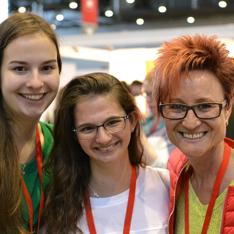V.I. Dones1, M.T. Dalusong2, M.E. Grageda3, S. Michael3
1University of Santo Tomas, Department of Physical Therapy, Manila, Philippines, 2Pamantasan ng Lungsod ng Maynila, Department of Physical Therapy, Manila, Philippines, 3University of the Philippines, National Teacher Training Center for the Health Professions, Manila, Philippines
Background: Blended teaching and learning is a combination of traditional and technology-enhanced techniques that provides a flexible and safe learning environment for students during the COVID-19 pandemic. However, there is a need to assess its effectiveness in delivering quality education through self-report questionnaires.
Purpose: The objective of the study was to critically appraise and summarize the psychometric property scores of self-report questionnaires evaluating the quality of blended teaching and learning delivery among health science university students.
Methods: The study followed the PRISMA-P and COSMIN protocols for systematic reviews and used a 10-step procedure for evaluating validity and reliability properties of the self-report questionnaires. Two researchers searched electronic databases and grey literature for relevant articles. Two independent reviewers (MTBD, VCDIII) screened titles and abstracts, evaluated the full-text articles, and reached a consensus by discussion. The methodological quality of the included studies was assessed using the COSMIN Risk of Bias Checklist. They extracted relevant data from the studies. A narrative synthesis was performed, and the results of similar studies were pooled in a meta-analysis using the random effects model. The heterogeneity was assessed and subgroup analyses were conducted. The results were presented in a summary of findings table with the pooled result, overall rating, and quality of evidence. The most appropriate questionnaire was recommended based on good measurement properties.
Results: The 7 studies were conducted in Turkey, Australia, Spain, Taiwan, Romania and Iran, and had a total of 5,106 participants. The quality of the self-report questionnaire development was reported as inadequate in 4 studies and doubtful in 3 studies. Of these 4 studies with inadequate ratings, the Blended Learning Questionnaire had high-quality evidence for sufficient relevance, comprehensiveness, and comprehensibility, and had a KMO score of 0.655 (95% CI 0.539 to 0.747), N= 120. Three studies had low (n= 1) to very low (n= 2) quality evidence for sufficient relevance, comprehensiveness, and comprehensibility and had a pooled KMO score of 0.929 (95% CI 0.879 to 0.959), p <0.001, N= 3,809, I2 96.91%, p< 0.001). The feasibility of the self-report questionnaires was not described in all 7 studies.
Conclusions: Among the seven evaluated self-assessment tools, the Blended Learning Questionnaire stands out with high-quality evidence for sufficient relevance, comprehensiveness, and comprehensibility in measuring the quality of blended teaching and learning delivery in health professionals’ education.
Implications: The Blended Learning Questionnaire aims to understand the impact on health science students' study habits and identify proactive learners, while also evaluating the effect of the learning environment and resource availability on student behavior. It is aligned with student learning behaviors, but the evaluation priorities may vary between institutions and not all may be covered by the questionnaire.
Funding acknowledgements: This project was funded by the National Research Council of the Philippines of the Department of Science and Technology.
Keywords:
Blended teaching and learning
Blended learning
Health sciences
Blended teaching and learning
Blended learning
Health sciences
Topics:
Education: methods of teaching & learning
Education
Education: continuing professional development
Education: methods of teaching & learning
Education
Education: continuing professional development
Did this work require ethics approval? No
Reason: The study is a systematic review and meta-analysis, which is a type of secondary research. As it only involves reviewing existing published literature, ethics approval is not required.
All authors, affiliations and abstracts have been published as submitted.

